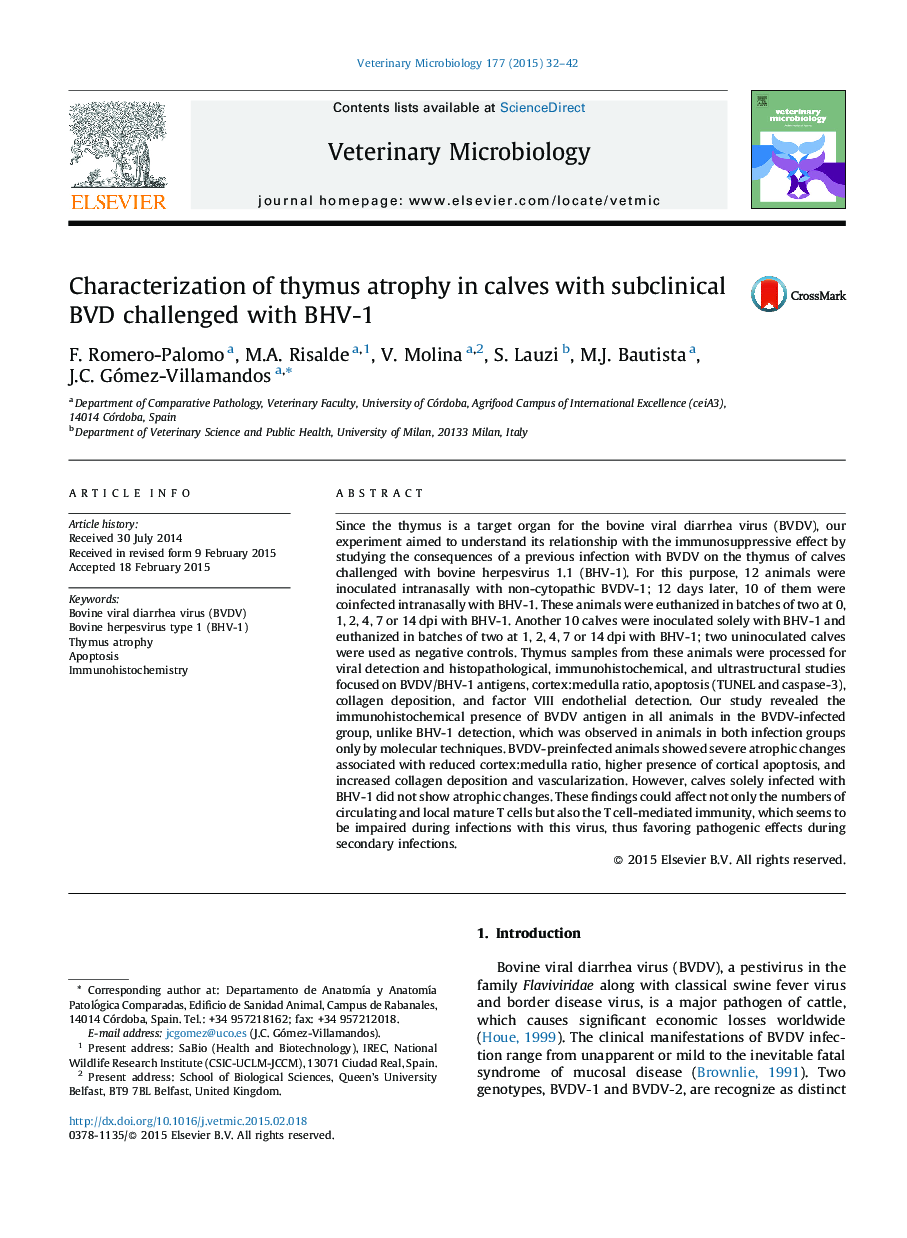| Article ID | Journal | Published Year | Pages | File Type |
|---|---|---|---|---|
| 5799924 | Veterinary Microbiology | 2015 | 11 Pages |
â¢BVD is an economically important cattle disease worldwide.â¢The thymus is a target organ for the bovine viral diarrhea virus (BVDV).â¢We characterize the lesional alterations underlying the BVDV-induced thymic atrophy.â¢Thymopoiesis is an essential process for the maintenance of a healthy immune system.â¢BVDV-induced thymic atrophy may account for predisposal to secondary infections.
Since the thymus is a target organ for the bovine viral diarrhea virus (BVDV), our experiment aimed to understand its relationship with the immunosuppressive effect by studying the consequences of a previous infection with BVDV on the thymus of calves challenged with bovine herpesvirus 1.1 (BHV-1). For this purpose, 12 animals were inoculated intranasally with non-cytopathic BVDV-1; 12 days later, 10 of them were coinfected intranasally with BHV-1. These animals were euthanized in batches of two at 0, 1, 2, 4, 7 or 14Â dpi with BHV-1. Another 10 calves were inoculated solely with BHV-1 and euthanized in batches of two at 1, 2, 4, 7 or 14Â dpi with BHV-1; two uninoculated calves were used as negative controls. Thymus samples from these animals were processed for viral detection and histopathological, immunohistochemical, and ultrastructural studies focused on BVDV/BHV-1 antigens, cortex:medulla ratio, apoptosis (TUNEL and caspase-3), collagen deposition, and factor VIII endothelial detection. Our study revealed the immunohistochemical presence of BVDV antigen in all animals in the BVDV-infected group, unlike BHV-1 detection, which was observed in animals in both infection groups only by molecular techniques. BVDV-preinfected animals showed severe atrophic changes associated with reduced cortex:medulla ratio, higher presence of cortical apoptosis, and increased collagen deposition and vascularization. However, calves solely infected with BHV-1 did not show atrophic changes. These findings could affect not only the numbers of circulating and local mature T cells but also the T cell-mediated immunity, which seems to be impaired during infections with this virus, thus favoring pathogenic effects during secondary infections.
